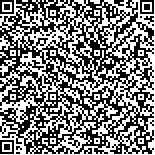| With the rapid growth of population in Guiyang, the contradiction between inadequate
supply of public service facilities and increasing demand has become prominent. Traffic congestion
continues to worsen, and the undulating terrain of the mountainous city makes long-distance walking
challenging. Optimizing the allocation of public service facilities and improving urban livability
are crucial issues in Guiyang’s urban planning. Based on the identification and related research
of community life circle functions, an evaluation index system for the convenience of 5, 10 and
15-minute life circles in Guiyang has been constructed.
For the 5-minute life circle, facilities such as kindergartens, daily shopping, catering facilities,
and parks/squares are selected, covering 4 major categories and 8 sub-categories. For the 10-minute
life circle, facilities including transportation hubs, sports facilities, primary schools, and beverage/
snack vendors are chosen, encompassing 4 major categories and 10 sub-categories. For the 15-minute
life circle, facilities like entertainment and leisure, other shopping options, life services, medical
facilities, cultural tourism attractions, and shopping malls/clothing stores are considered, spanning 6
major categories and 31 sub-categories. Diversity is mainly measured based on the major categories.
Using residents’ homes as the center point, the research team obtained 52 008 POI (Point of
Interest) data and 2 587 AOI (Area of Interest) data from six municipal districts in Guiyang through the
Gaode Map API. To ensure scientific rigor, the team randomly followed an elderly person or child for
5 minutes, 10 minutes, and 15 minutes without their knowledge, maintaining the same speed and path.
Research in a particular road segment ended when at least 3 or more cases were observed, and 80% of
the cases had a walking distance variation within 5%. After successfully following 27 cases, outliers
were excluded, and the average results were rounded off to determine the farthest walking distances of
300 m, 580 m, and 860 m for the 5-minute, 10-minute, and 15-minute life circles, respectively.
This study evaluates the accessibility and diversity of public service facilities. Accessibility
of daily facilities is assessed using the cumulative opportunities method, which measures the total
number of opportunities reachable from a specific location within a given time or cost. In the samelevel
community life circle, the residential area with the highest number of accessible facilities
is assigned a full score. Based on this number, 75%, 50%, and 25% are set as cut-off points for
excellent, passing, poor, and needing improvement categories, respectively. Diversity in accessible
daily life facilities refers to the number of different types of public service facilities (POI major
categories) reachable from home within a certain level of the community life circle.
In accessibility measurements, the compliance rates for the 5 minutes, 10 minutes, and
15-minute life circles were 46.04%, 5.76%, and 5.49%, respectively. Overall, the 5-minute life circle
performed best among the three levels, benefiting from the commercialization of ground-floor spaces
in residential areas. However, due to limitations in early planning and haphazard construction in
some residential areas, the accessibility of the 5-minute life circle in the central urban area was lower
than in other regions. Additionally, the high land prices and limited available land in the central
urban area made it difficult to develop supporting commercial facilities in later stages.
In diversity measurements, the compliance rates for the 5, 10, and 15-minute life circles were
29.38%, 69.00%, and 82.22%, respectively. Generally, the more concentrated the residential areas,
the better the diversity of public service facilities. Kindergartens and parks/squares emerged as themain limiting factors. Past planning, prioritizing efficiency and economic benefits, had insufficient emphasis on residents’ leisure needs. Furthermore, some
specialty commercial centers often overlooked local residents’ demands for other public service facilities.
The overall convenience of life circles in Guiyang reached only 5.49%, indicating a significant regional disparity in the distribution of public service
facilities. The low convenience of life circles, coupled with the challenging terrain of the mountainous city and limited economic resources, constrained the
increase in the density of subway lines. As a result, residents relied heavily on public transportation, exacerbating traffic congestion and affecting the city’s
livability.
It’s found that: 1) from an accessibility perspective, high-quality residential areas accounted for a low proportion, and the accessibility of the 5-minute
life circle was better than that of the 10 and 15-minute life circles; 2) in terms of facility diversity, the compliance rate of the 5-minute life circle was the
lowest; 3) only 5.49% of residential areas in Guiyang met the standards for life circle convenience, and the distribution of certain types of daily facilities
exhibited regional characteristics. To enhance livability in Guiyang, it is essential to strengthen the construction of convenient life circles. |


